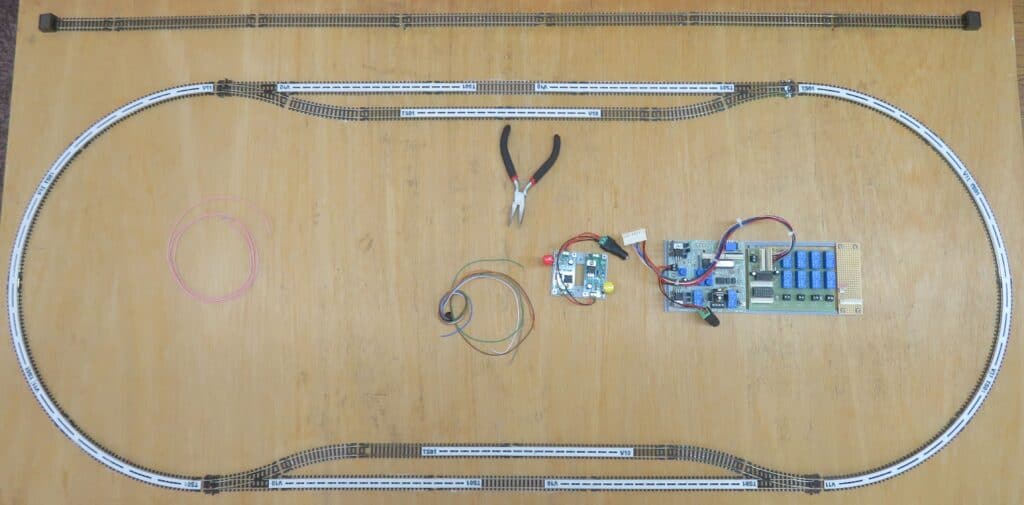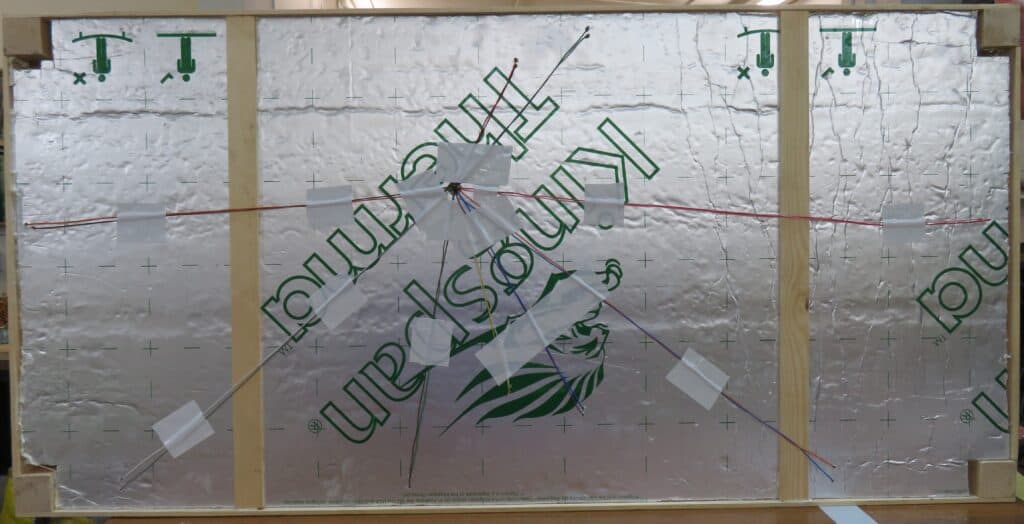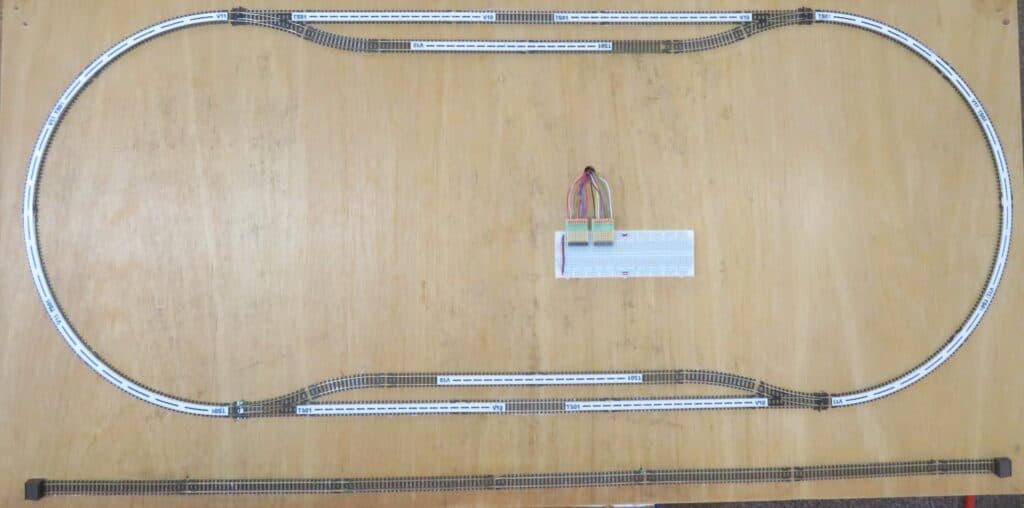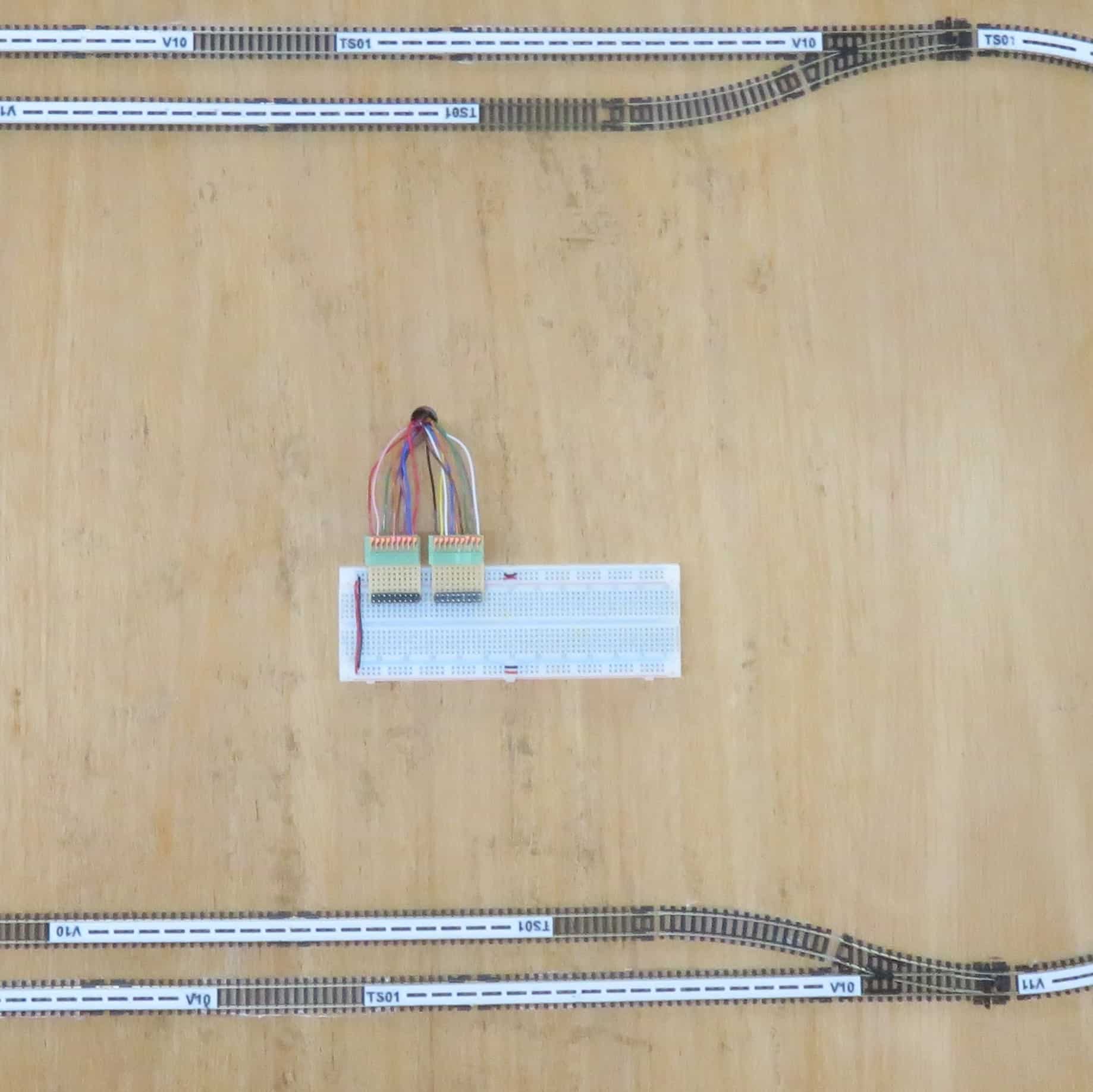
The first task was to try out the setting tools that had been produced using the 3D printer. This seemed to be a far better way of doing things than the previous method.
Also on the board is a dual channel DC controller built for less than a fiver – OK it will need a wall-wort to provide the power and the more sophisticated ATC device.
The droppers were attached to rail joiners and holes drilled through the board and then brought out to the central hole. Inevitably there are more droppers than colours.
Although the board was small it was a three handed task involving Malcolm H, Ray and Allan.


The dropper wires were secured, on the advice of Malcolm C, with Gaffa tape. Malcolm impressed upon us, the maxim that if the Gaffa tape was not sticking to the board, all we needed to do was use more Gaffa tape.
BT spent millions training its engineers, and this afternoon, the club was able to gain from that investment by having Ray complete the wiring to the terminal block.
His technique involved the use of a black marker pen in a way that none of us had seen before – and probably will never see again.
As the ‘layout’ is a test track, we need a way of rapidly reconfiguring the wiring – and and the use of a breadboard, stuck to the baseboard, seemed to be the best way of achieving this.


